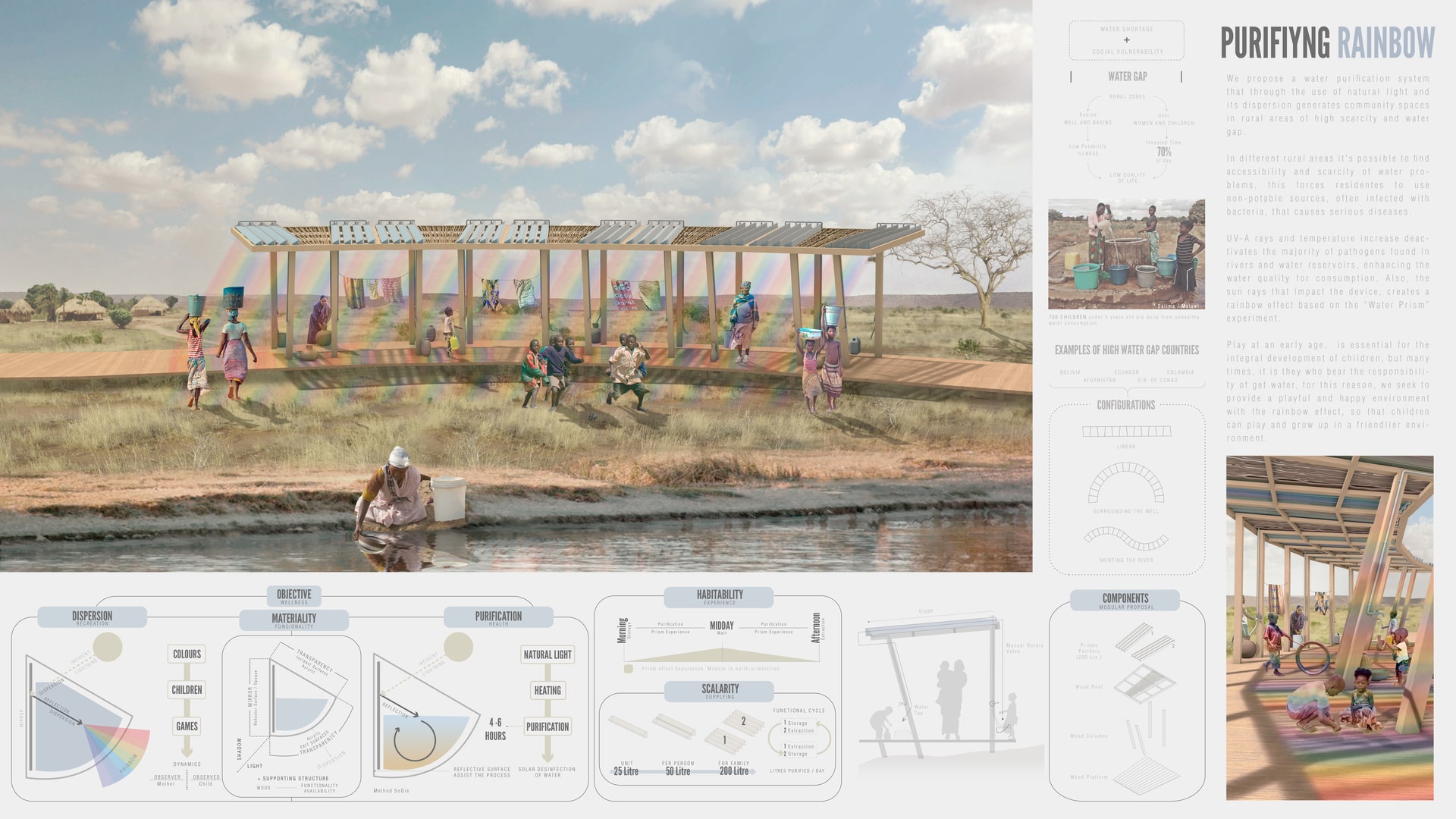Project Description
Nowadays, due to climate change, arid and drought areas have expanded dramatically in many regions of the world, which has caused the water gap to widen in many communities. The lack of accessibility and infrastructure to obtain water, often forces communities in rural areas to build their own extraction mechanisms, which does not ensure the potability of water and can lead to multiple diseases responsible for the deaths of many children and women daily, due to dehydration, diarrhea, cholera, etc. In addition to causing diseases, the lack of drinking water becomes a social problem. The majority of people in charge of extracting water in rural communities correspond to women, youth and children who spend an average of 70% of their day in this task. Time that they are deprived of playing or having access to a minimum education. This project consists of a water purification system, that uses natural light and its dispersion, to create community spaces in rural areas of high scarcity and water gap, proposing a functional-playful duality and a modular configuration for the project. The playful proposal is based on the “Water Prism” experiment, which by using a mirror on one side of a container, the sun rays that have been scattered upon entering the water are reflected in it, and then are scattered again upon exiting which amplifies the effect of the prism by generating a rainbow effect in the space contained under the structure. Taking into account that in this type of context the children are precisely the ones who bear the responsibility of obtaining water, we seek to create a playful and dynamic environment that, from the play of colors and movement of these throughout the day, can create a space for children to play and relax, fundamental actions for comprehensive development at an early age according to UNICEF. The functional proposal uses solar water disinfection, also known as SODIS. That consists of using ultraviolet rays and the increase in temperature to inactivate the pathogens present in the water of rivers and wells, and thus purifies it, improving its quality for consumption and reducing outbreaks of very serious diseases. The modular configuration of the project consists of a unit, which can be scaled under different layouts depending on the characteristics of its context in territorial and spatial terms, the source of extraction and the number of people it supplies. Being able to generate pavilions for an entire community or purification stations for families. Each module is made up of eight prisms, an amount that contains the volume to meet the minimum hygiene needs of a family, according to the WHO. Grouped into two sets of four prisms, the module generates a constant cycle of extraction and storage and is oriented to maintain the rainbow effect throughout the day to create spaces for recreation and rest. The material chosen for the structure of the unit is wood, due to its almost universal availability in these rural areas of water scarcity. In addition the wood allows a feasibility of prefabrication and is easy to assemble and transport. The prisms are made of acrylic. These ones are oriented to receive solar radiation as many hours as possible, North or South depending on the place, and on gradient to facilitate the process of entry and exit of water with a manual rotary valve to raise and shakes it, increasing the oxygen levels, which helps to eliminate pathogens. They are composed of three faces: The first vertical face, contains a mirror inside with its reflective face towards the inside of the prism, to reflect the light and its opaque face towards the outside, to obstruct it and give shade to the pavilion. The second face is the upper translucent face, which allows light to enter for the operation of the system. The third is the lower face with a curvature that amplifies the rainbow effect that occurs inside, giving a recreational-functional duality to the unit. This project believes on the fundamental importance of fulfilling physical and emotional needs, needs that must go hand in hand in order to change a person's quality of life.
